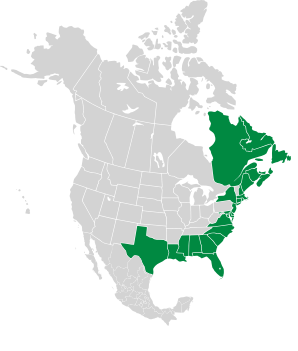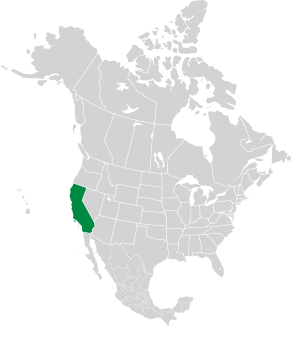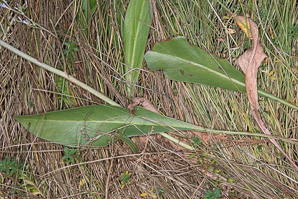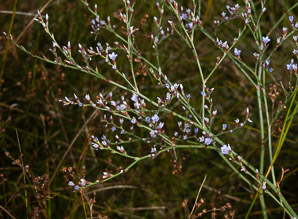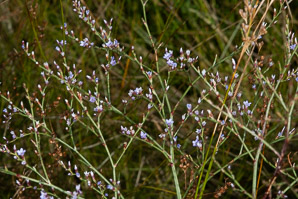|
Limonium carolinianum (Walter) Britton
Carolina sea-lavender, canker root, ink root, marsh root, lavender thrift, American thrift, seaside thrift
| Kingdom | Plantae | Plants, but not fungi, lichens, or algae |
| Subkingdom | Tracheobionta | Vascular plants—plants with a “circulatory system” for delivering water and nutrients |
| Division | Magnoliophyta | Flowering plants, also known as angiosperms |
| Class | Magnoliopsida | Dicotyledons—plants with two initial seed leaves |
| Subclass | Caryophyllidae | Cacti, many other succulents, carnivorous plants, and leadworts |
| Order | Plumbaginales | A relatively small order of shrubby or herbaceous plants |
| Family | Plumbaginaceae | Includes the leadwort and plumbago families |
| Genus | Limonium | from the ancient Greek name Leimonion, supposedly from leimon, “a marsh” (ref. genus Limonium) |
| Species | carolinianum | Of or from Carolina |
About plant names...
Carolina sea-lavender is native to salt marshes along the entire east coast
of North America, including Canada and Mexico. It prefers brackish or salt marshes and flats, coastal beaches, marshes, and intertidal ocean areas.
Plants: These slow-growing perennials look a bit
out of place in otherwise nearly uniform masses of salt marsh grasses. From a distance,
when blooming,
they look like sprays of pale purplish tumbleweed. Plants are 1-3′ (30-91 cm) × 1-2′ (30-60 cm).
Leaves: Basal rosettes
1¾-10″ (5-25 cm) around (rarely up to 1′ (40 cm).
Leaves are spatulate,
obovate, or elliptic.
They are 1¾-6″ (5-15 cm) × ⅛-1¾″ (5-50 mm), leathery in texture,
with smooth edges and sharp tips. The leaves have salt glands that
excrete excess salt, in order to survive marine environments.
Flowers: Large intricately branched inflorescences
contain hundreds of diminutive flowers. Each flower is 1/16-⅛″ (2-3 mm) in size, with five petals
and five stamens, and blue to purple,
or rarely white. Flowers appear from June to December.
Fruits: Tiny seeds.
Here are a couple of sea-lavenders (Limonium species), easily distinguished by their
ranges:
|
|
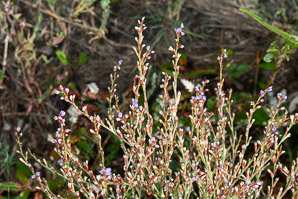
8/24/2023 · Morse Mountain, Phippsburg, Maine · ≈ 8 × 5″ (20 × 13 cm) 
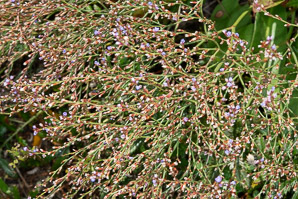
8/24/2023 · Morse Mountain, Phippsburg, Maine · ≈ 10 × 6″ (24 × 16 cm) 
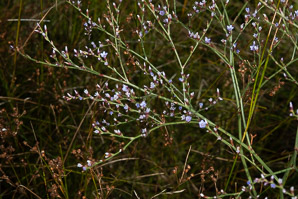
8/24/2023 · Morse Mountain, Phippsburg, Maine · ≈ 8 × 5″ (20 × 13 cm) 
|
| Habitats |
Native to salt marshes along the entire east coast
of North America, including Canada and Mexico. It prefers brackish or salt marshes and flats, coastal beaches, marshes, and intertidal ocean areas. |
Along the California coast, in disturbed coastal areas, cliffs, sand dunes, and roadsides, at elevations below 328′ (100 m) |







